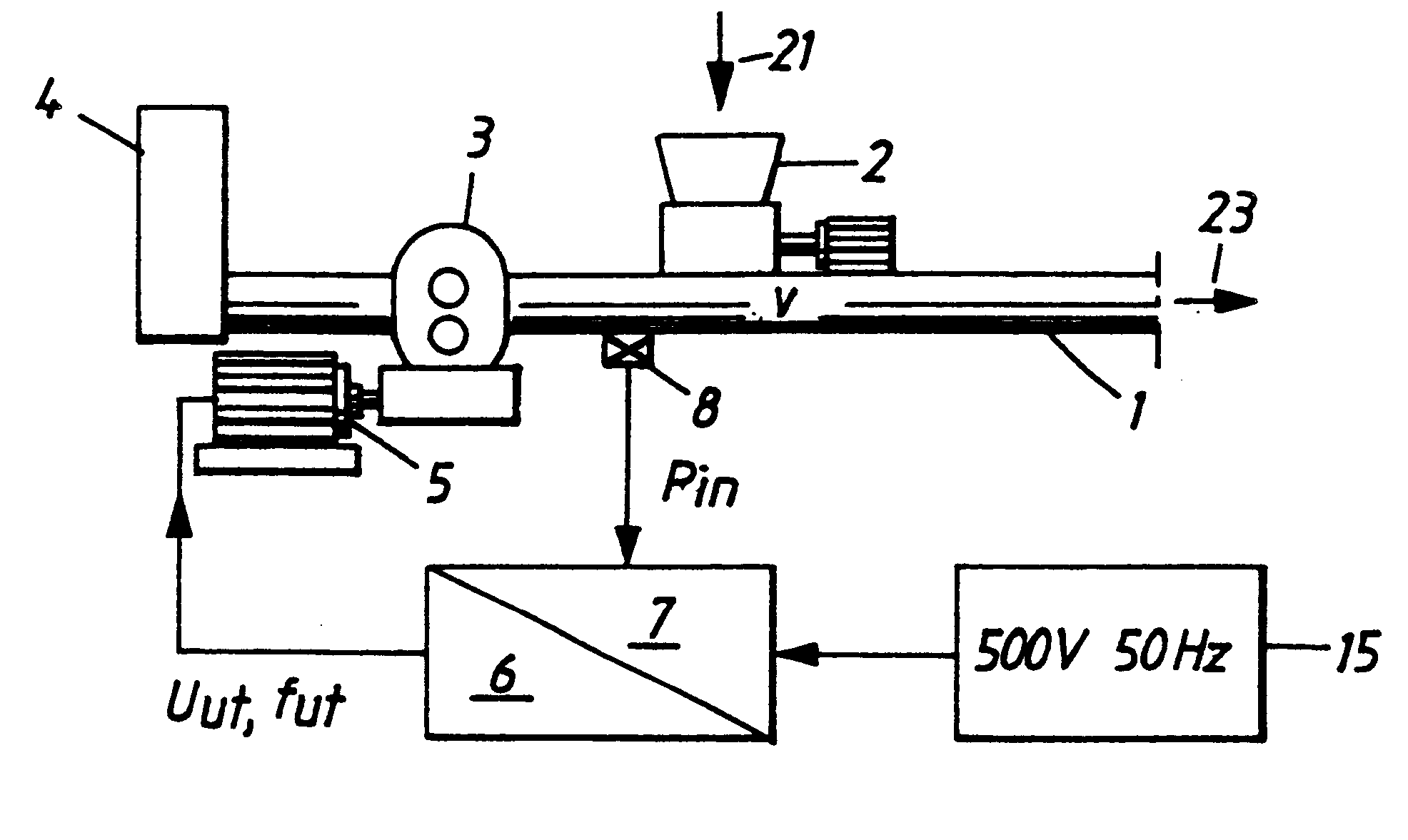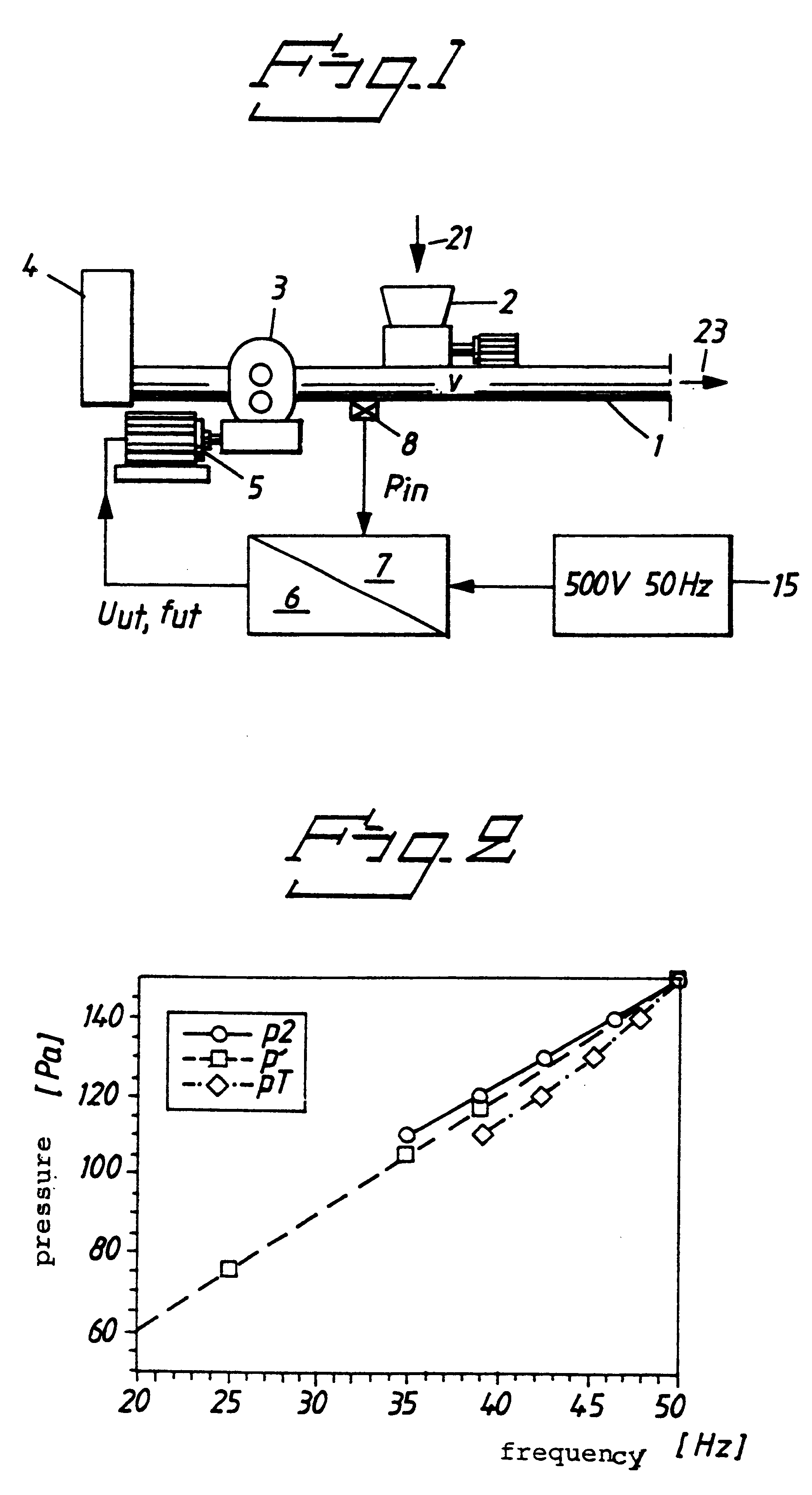Method and plant for pneumatic transport of solid particles
- Summary
- Abstract
- Description
- Claims
- Application Information
AI Technical Summary
Benefits of technology
Problems solved by technology
Method used
Image
Examples
case 1
that the temperature dependency is weak, T1=T1=T, and that v1 is directly proportional to the rotational speed as described above==> ##EQU2##
since p1 and v2 are constants. k1 can now be easily determined with data relating to a typical system, e.g. when n=629 rpm at 50 Hz with p2=150 kPa.==>k1=3.
The drawing shows this simple relationship p' which applies approximately at a constant velocity v2=33 m / s (broken line--squares in FIG. 2).
case 2
assume that the temperature dependency is weak, T1=T2=T, and determine v1 as a function of f1 by reading directly from pump curves for the blower concerned. In the case in question, the relationship p2 shown in FIG. 2 by the full line containing circles is obtained.
case 3
se" determination of the relationship that applies to the system. Constant speed v2=33 m / s. Include the temperature T through pV / T=constant, data from pump curves included. Temperature. The relationship between p2 and f1 is given in this case by pT, (shown in FIG. 2 by a broken line that contains rhomboids).
It should be observed that when we directly choose implementation with Case 1-p', the actual velocity at f1=50 Hz will, of course, be v2=33 m / s as it should be. At p2=116.5, f1=38.9 the actual velocity is v2=30.97. The system will herewith run at an idling speed in principle.
In practical embodiments, several pressure sensors 8 are arranged in the conduit, so as to be on the safe side. The rotary speed of the asynchronous motor may generally vary in the range of (1.0:0.5) times its normal speed, i.e. the frequency can vary from 25-50 Hz since the switch gear normally delivers 50 Hz. The minimum frequency of 25 Hz is then determined with regard to safety against thermal fatigue and...
PUM
 Login to View More
Login to View More Abstract
Description
Claims
Application Information
 Login to View More
Login to View More - R&D
- Intellectual Property
- Life Sciences
- Materials
- Tech Scout
- Unparalleled Data Quality
- Higher Quality Content
- 60% Fewer Hallucinations
Browse by: Latest US Patents, China's latest patents, Technical Efficacy Thesaurus, Application Domain, Technology Topic, Popular Technical Reports.
© 2025 PatSnap. All rights reserved.Legal|Privacy policy|Modern Slavery Act Transparency Statement|Sitemap|About US| Contact US: help@patsnap.com



